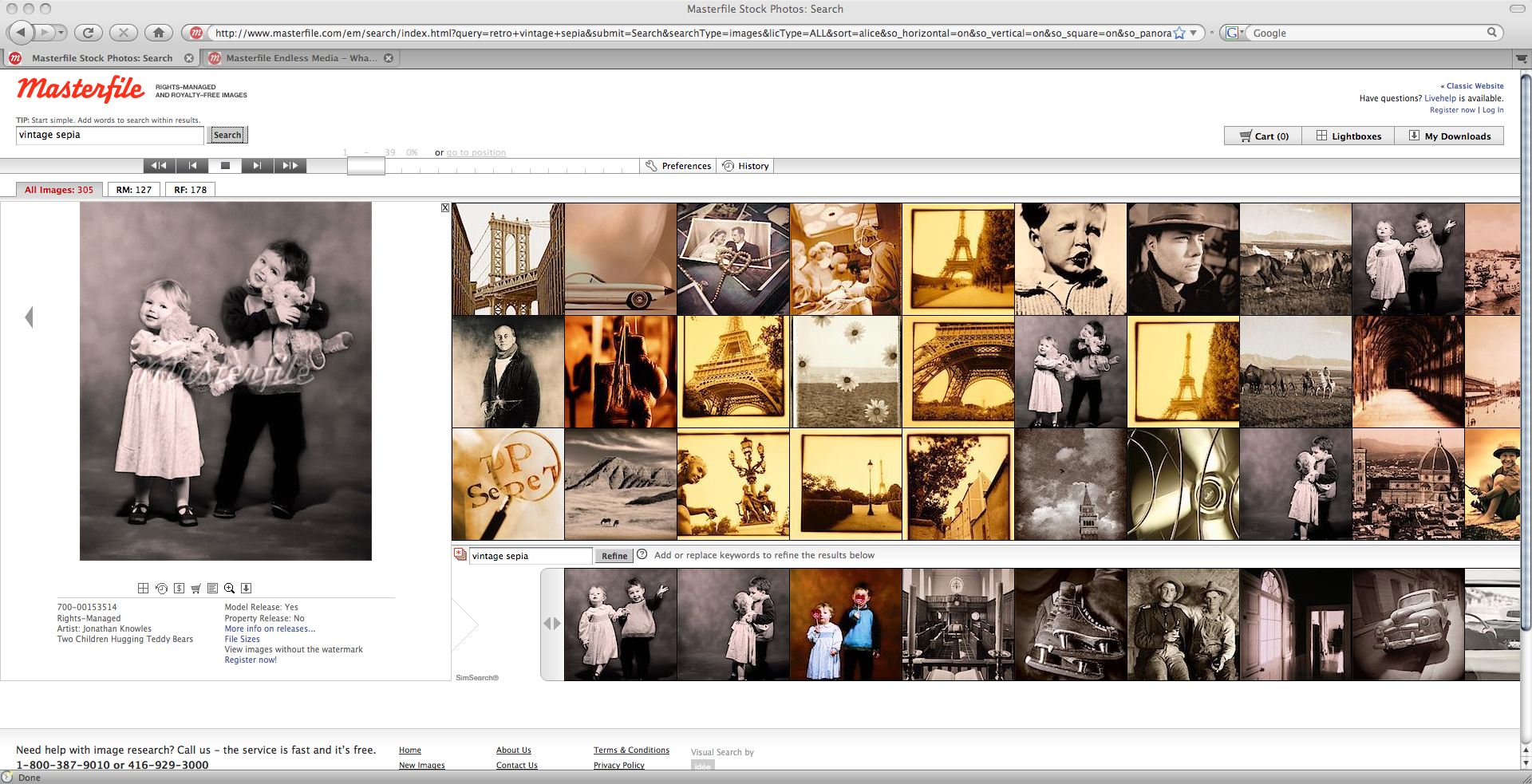“I am supposed to be concentrating on buying SuperStock,” says Masterfile president Steve Pigeon, who admits to spending entirely too much time playing with the new search engine of masterfile.com. Live for only a couple of days and yet to be officially announced, the new interface of the Canadian agency represents a paradigm shift—if not a giant leap—in stock-image search.
A year ago, Masterfile restructured its marketing operations, freeing up John McDonald to take the helm of a newly established department for product development and innovation. McDonald, who previously developed the agency’s SimSearch and tag-cloud systems, lead an in-house team of 10 in rethinking and rebuilding Masterfile’s search engine, which took well over a year.
McDonald began by asking a series of deceptively simple questions: What if we just did not have a host of pop-ups that had to be closed after completing a search? What if there were no page numbers for search results? What if a buyer did not have to make 10 clicks but instead got some intelligent help after one?
The end result is a search engine that blends Boolean functionality with image recognition and proprietary technologies. Searches begin with a word and other familiar elements, such as orientation or category, but “there is a lot less messing with keywords,” explain Pigeon and McDonald, who talk over each other in excitement that mirrors a couple of kids breaking in a new toy.

The name of this toy is Endless Media, and with good reason: the primary search results are displayed as three horizontally scrollable rows of square thumbnails, presenting a seemingly endless amount of options. The style of review is up to the user. The search engine can auto-play results by scrolling and pausing at adjustable time intervals. It also allows a buyer to move back and forth with the help of buttons familiar from early cassette-player days, drag a slider to any point between the first and last screens—or even specify a “go to” position as a percentage of total. Sizes of image thumbnails can also be adjusted based on user preference.
Hovering over any thumbnail produces a small uncropped preview, and clicking on an image is where the real fun begins: Without losing the three rows of primary results, a buyer also sees a large image preview—unwatermarked for registered customers—and a series of similars.
“You did not ask for similar images, but we gave them to you without penalizing you by losing your primary search,” explains McDonald, who stresses the importance of this never-lose-your-place functionality and the ability to work both literally and laterally at the same time.
Another intuitive element is the search engine’s memory, which keeps track of every previously enlarged image and allows back-and-forth movement between them. Much like being able to review previous purchases, Masterfile customers will be able to review images they considered days or weeks before, without having to lightbox them or make any other effort. Add the ability to maintain up to four active lightboxes, magnify any portion of an image and maximize the width of modern flat screens—and, of course, one of the best image collections—and you get the industry’s next search engine.
“We are all going after the same thing, trying to solve the same problem: getting the right image in front of the client most effectively,” says Pigeon. Having run Masterfile for 35 years, he is facing his fifth recession and says it is by far the worst in his memory. “The way to stay ahead—now and always—is to innovate. This is our first step.”